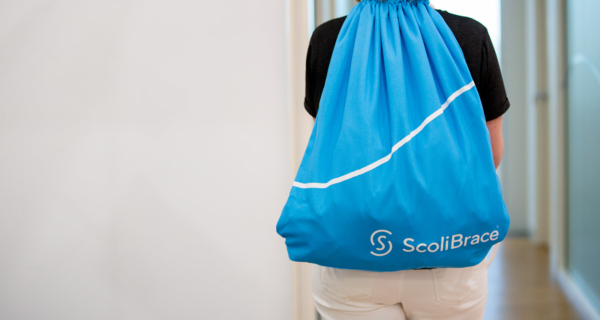In this article, we highlight new insights in the conservative management of Juvenile Idiopathic Scoliosis (JIS) – a challenging early-onset form of scoliosis with high risk of progression.
A recent case series, co-authored by ScoliCare’s Chief of Research and Communications, Rose Mirenzi, along with Nora-Lee Doueihi, Juan du Plessis, and Dr. Jeb McAviney, offers promising long-term outcomes using the ScoliBrace® system in a pediatric population.
Juvenile Scoliosis: A High-Risk Condition
JIS affects children aged 3 to 9, often presenting with rapidly progressing curves, particularly in those with Cobb angles exceeding 30°. If left untreated, these patients face a near 100% likelihood of requiring surgery, making early and effective intervention critical.
Study Overview: ScoliBrace® in Juvenile Scoliosis
The case series followed five children (ages 5–9) diagnosed with JIS, each presenting with double or triple curves, including a primary right thoracic curvature. All were managed with full-time wear of a custom-designed ScoliBrace®, with gradual reduction in wear time based on growth markers such as Risser staging and height progression.
Patients were monitored for 3–8.5 years (average follow-up of 6.6 years), with clinical assessments every three months. Outcomes were tracked using out-of-brace radiographs, postural photographs, and Angle of Trunk Rotation (ATR).
Results: Meaningful Curve Reduction & Stability
- Primary Thoracic Curves: Reduced from a mean of 32.8° to 14.2° (57% improvement)
- Lumbar Curves: Reduced from 22.6° to 6° (73% improvement)
- Upper Thoracic Curves (in 2 patients): Reduced from 27° to 23°
- ATR (Thoracic): Improved from 13.8° to 6.2° (55% reduction), with long-term postural benefits
Clinical Implications
This case series suggests that early, high-compliance bracing using a custom 3D approach like ScoliBrace® may offer a non-surgical pathway for managing JIS – even in complex multi-curve presentations. Beyond Cobb angle correction, significant improvements in trunk rotation and alignment were observed and maintained long-term.
While further controlled studies are needed, these findings reinforce the role of custom, full-time bracing in reducing surgical risk and improving quality of life during critical growth years.
You can read the case series here.
For Healthcare Professionals
If you are managing a young patient with JIS, particularly those with curves over 30°, consider a consultation or referral to explore conservative bracing options. Early intervention, guided by consistent monitoring and growth assessment,can significantly alter a child’s scoliosis trajectory.
For Patients and Families
If your child has been diagnosed with Juvenile Idiopathic Scoliosis and you’re exploring non-surgical treatment options, learn how ScoliBrace® may help. Early, customized bracing can provide meaningful curve correction and long-term stability. Find a ScoliBrace Provider near you.


